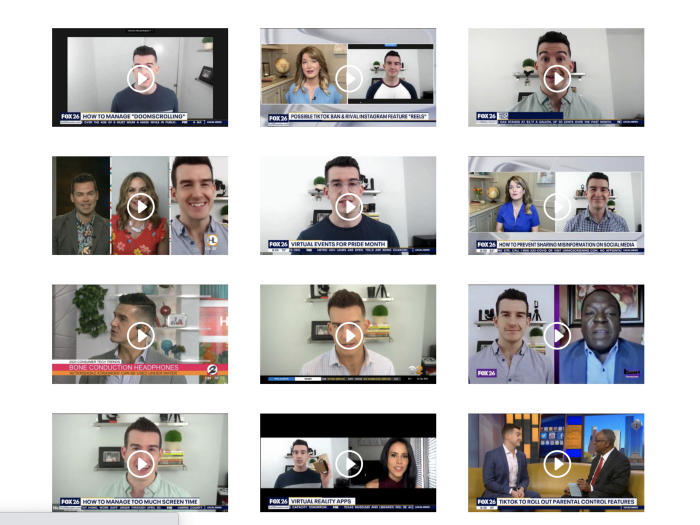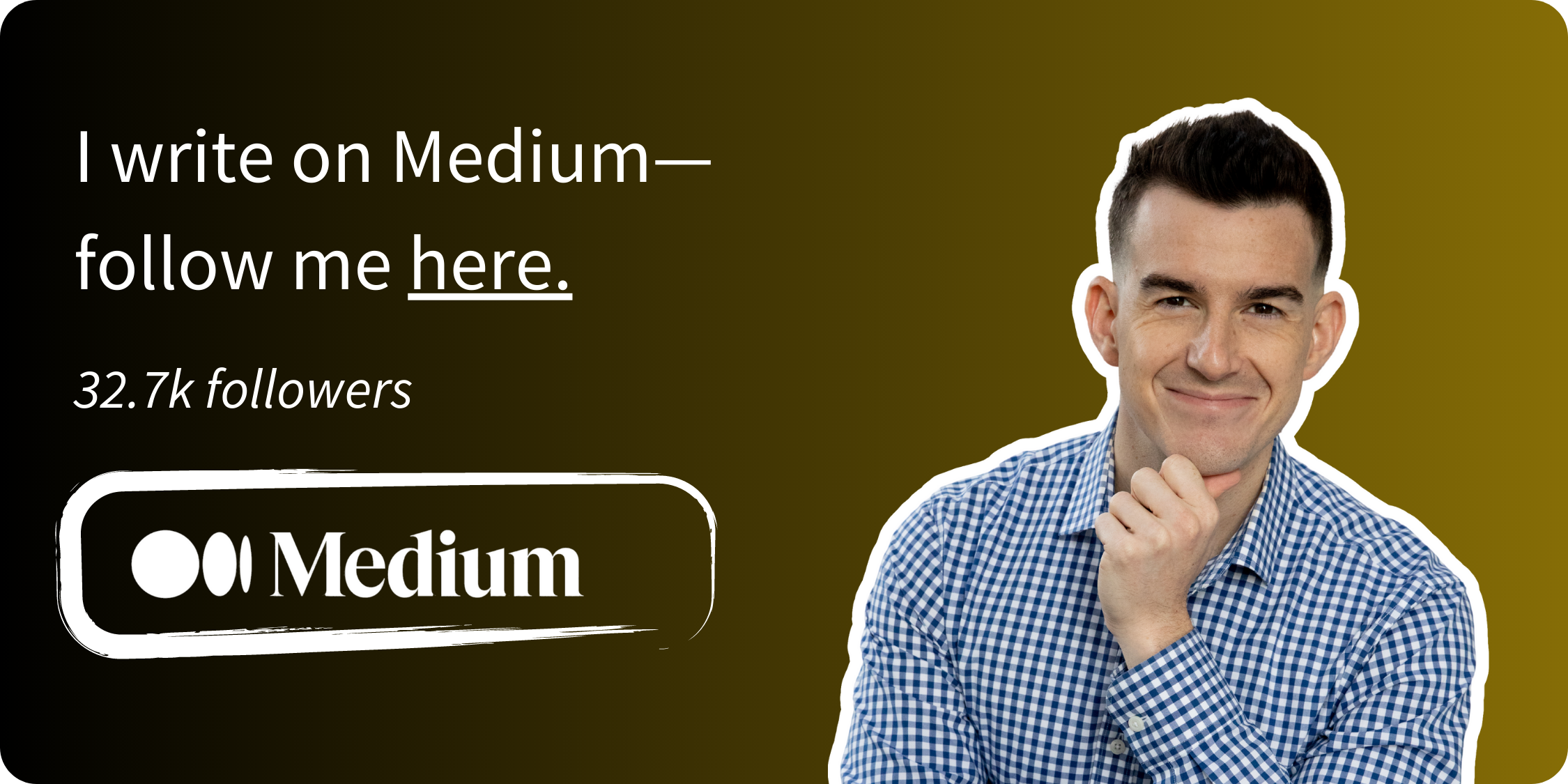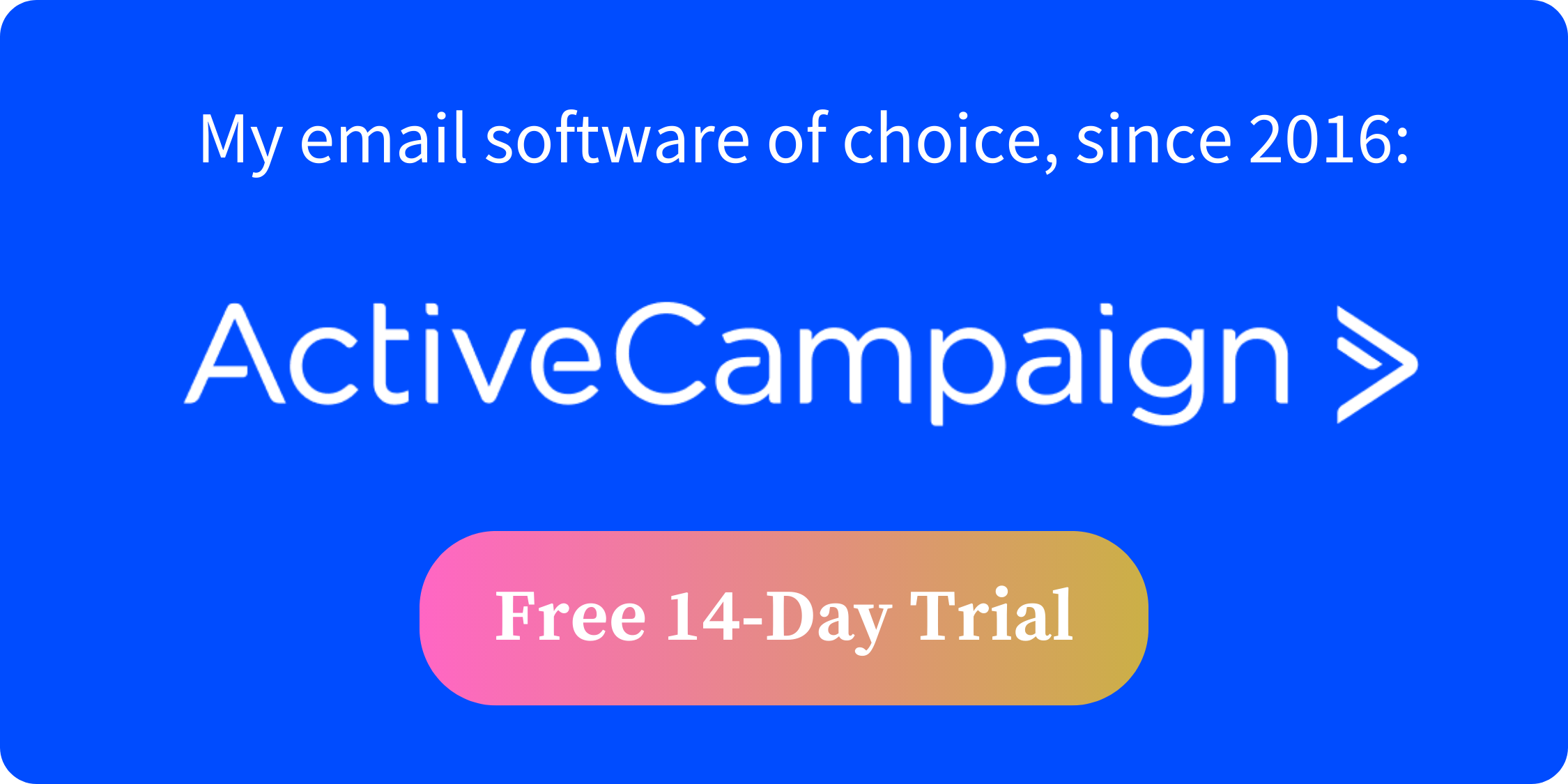Do you find yourself pitching your heart out and hearing nothing back? Do you have a compelling story or angle, but can’t seem to boil it down into a clear, succinct message that makes readers salivate with curiosity? Your story can be a magnet for publicity, media coverage, and exposure — but only when positioned correctly.
I’ve recently passed 50 live TV interviews in my portfolio, an exciting milestone that took about two years to achieve. As a result of this press, other speaking opportunities have appeared, my closing rates on sales calls have improved, and when I leapt back into full-time consulting and PR earlier this year, I had a portfolio of proven credibility marketers I could leverage when pitching proposals and other opportunities.

Screenshot from the author. Example of a past media portfolio.
When I started, however, my pitches were going nowhere. That’s because my expertise — marketing and PR for small business owners — wasn’t a fit for lifestyle publications or local TV morning shows.
5 Tips To Spin Your Story For More Publicity And Exposure - Post Outline
I knew about social media advertising and what makes people click. I knew how to write sales copy. And I definitely knew how to source and leverage virtual assistants to help you build your rolodex or get more work done. These topics weren’t really TV-worthy, though; they were too niche and didn’t speak to the general public.
That didn’t mean I couldn’t pursue media opportunities. It just meant I had to get more creative on how I could spin my story and expertise in different ways. Once I allowed myself to go with the flow and obsess over how my knowledge could interest their audience, I began securing podcast interviews, online articles, and TV appearances. In this article I’ll give you 5 tips on how to spin your story so you can do the same.
Why Care About Publicity And Exposure
Once you have a media placement, you own it forever. And in many cases, past media placements lead to future media coverage, especially if you focus on building relationships. Here’s a TV request I received last week to appear on 24 hours’ notice; this email came to me because I’ve proven in the past that I can go with the flow with what the station needs.

Screenshot from the author
Media outlets need you, because the whole job of a media outlet is to communicate stories. Research from Nielsen found American adults spend 44% of all available minutes in their day consuming media, which is about 10.5 hours as of this writing. Most of that content consists of stories.
- The 4 hours of TV Americans watch each day? Largely stories. Broadcast stations cover news stories, documentaries, and tantalizing cliffhangers around which real housewife will make a scene at a restaurant next week, so stay tuned.
- Smartphone consumption? Most of it is social media posts from our friends and favorite brands, videos from our favorite outlets, audio journalism or comedy, and amateur filmmakers galore on TikTok.
- Other online content? Paid content distribution has taken off in the last decade because there is so much content on the internet it’s become difficult to traverse. People now happily pay a monthly subscription or donate to a Patreon to have quality content delivered to their digital doorstep.
Publishers know that stories attract eyeballs. They want your story. But it needs to be the right fit in terms of targeting, audience, and urgency. So here are 5 tips on tweaking the angle of your story to help drum up more placements.
5 Tips To Spin Your Story For More Publicity And Exposure
#1: Pick the right outlet
One outlet’s trash is another outlet’s treasure. Many people only pursue large, mainstream media outlets and household names because they are the only publications or shows they are familiar with. With a little digging, you can find some pretty rad publications all over the internet. Here are a few of my recent favorites:
- The Outline, a Brooklyn-based outlet with impressive web design whose columns include Power, Culture, and Future;
- Spectrum South, a publication dedicated to capturing the LGBTQ experience in the Southern United States; and
- GrowthLab, the hyper-tactical editorial arm of personal finance author Ramit Sethi’s company focused almost entirely on online business tutorials.
I like to use the website SimilarSites to help me find websites I don’t know I don’t know, but could write for. The same theory applies to podcasts, broadcast television, radio shows, and other media opportunities. Your story or pitch idea might not jive with the Wall Street Journal, but it could be perfect for MoneyUnder30. Before trying to contort your story to fit a mainstream outlet, take the time to scope out outlets who might love your pitch angle in its current form.
#2: Pair your story with a current event
Whether you like it or not, media outlets and news stations follow a seasonal cycle. Every October, they cover Halloween. Every January, they cover new year’s resolutions and goal-setting. This is predictable and can help you get proactive with your PR efforts so it doesn’t feel you’re reacting to the news all day every day. The reality is that these topics are going to be covered anyway, so it might as well be you who’s getting the exposure.
In my group program, I give clients month-specific angle ideas each month in a PDF to help sprinkle urgency into their pitches. I also challenge clients to take a nugget of expertise or personal story of theirs and figure out how to apply it to all twelve months of the year.

Screenshot from the author. Example of list of time-specific angles to leverage in adding urgency to a pitch.
Do this for yourself. You’ll begin to break up the notion that you can only share your story at certain times or during certain awareness months. Stretch yourself! Brainstorm how you can make your story topical for any month of the year.
#3: Know your window of opportunity
When you pitch is just as important as what you pitch. Pitching your story to TV is immediate and often a pitch now, book now environment. Pitching to blogs or podcasts might mean a month or two of lead time. And then there’s pitching to physical magazines, which usually plan the layout and content of each issue several months in advance.
If you pitch to a TV station three months out, you’re way off, and if you pitch a magazine ten days prior to publication, you’re also way off. But if you were to flip those timelines, you’d have a solid PR strategy. Know your window of opportunity.
#4: Actually pitch your story
Our personal stories are personal, so when we start out on our pitching journey and don’t get much response, it can be disheartening. Acclimate to the landscape of pitching; it’s important to not get in your head about rejection and failure.
To add some spin, show the editor or producer you are pitching that you know the outlet. Reference some of their past work, recent activity on the outlet, or even a recent social media post of theirs. Flattery will get you everywhere, and showing that you’ve done your homework will take you a long way and help you stand out from the competition.
#5: Spin placements even more when showing them to your network
Once your story gets covered, promote it. A lot! Use repurposing strategies to add context or flavor to your story and frame it in a different way. A few approaches I like to use include:
- Social media posts. I use the status of Facebook and Instagram posts as a way to summarize my placement and get people excited. The reality is that most people will not click through or leave a platform to read your article, but if you get the point across in a status update, you’ll read the brand and credibility benefits of the placement.
- Email newsletters. I’ve previously discussed my preference for email marketing, and communicating a recent media hit as a newsletter is a lay-up with regard to keeping your audience engaged. I incorporate past articles and appearances into my automated emails as well to help people get to know me.
Leverage can also turn lemons into lemonade. In 2018, a story angle I submitted to Men’s Health that took almost a year to nail down was slashed from three paragraphs to just 31 words at the last minute. So instead of throwing out the placement, I bought the issue, repurposed my original submission, and spun a decent yarn over on Instagram.

Screenshot from the author.
Messaging for media requires creativity and flexibility; it’s normal and natural for your story to evolve and shift with time. Identify your target outlets, dial in your timelines, and craft a compelling narrative, and you may find with time that your story begins to take on a life of its own.
Thanks For Reading 🙏🏼
Keep up the momentum with one or more of these next steps:
📣 Share this post with your network or a friend. Sharing helps spread the word, and posts are formatted to be both easy to read and easy to curate – you'll look savvy and informed.
📲 Hang out with me on another platform. I'm active on Medium, Instagram, and LinkedIn – if you're on any of those, say hello.
📬 Sign up for my free email list. This is where my best, most exclusive and most valuable content gets published. Use any of the signup boxes on the site.
🏕 Up your writing game: Camp Wordsmith is a free online resources portal all about writing and media. Get instant access to resources and templates guaranteed to make your marketing hustle faster, better, easier, and more fun. Sign up for free here.
📊 Hire me for consulting. I provide 1-on-1 consultations through my company, Hefty Media Group. We're a certified diversity supplier with the National Gay & Lesbian Chamber of Commerce. Learn more here.






